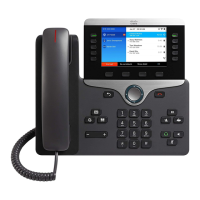TPC allows the client and access point to exchange information, so that the client can dynamically adjust the transmit power.
The client uses only enough energy to maintain association to the access point at a given data rate. As a result, the client
contributes less to adjacent cell interference, which allows for more densely deployed, high-performance wireless LANs.
If there are repeated radar events detected by the access point (just or falsely), determine if the radar signals are impacting a
single channel (narrowband) or multiple channels (wideband), then potentially disable use of that channel or channels in the
wireless LAN.
The presence of an access point on a non-DFS channel can help minimize voice interruptions.
In case of radar activity, have at least one access point per area that uses a non-DFS channel (UNII-1). This ensures that a
channel is available when an access point’s radio is in its hold-off period while scanning for a new usable channel.
A UNII-3 channel (5.745 - 5.825 GHz) can optionally be used if available.
Below is a sample 5 GHz wireless LAN deployment.
For 5 GHz, 25 channels are available in the Americas, 16 channels in Europe, and 19 channels in Japan.
Where UNII-3 is available, it is recommended to use UNII-1, UNII-2, and UNII-3 only to utilize a 12 channel set.
If planning to use UNII-2 extended channels (channels 100 - 144), it is recommended to disable UNII-2 (channels 52-64) on the
access point to avoid having so many channels enabled.
Having many 5 GHz channels enabled in the wireless LAN can delay discovery of new access points.
2.4 GHz (802.11b/g/n)
In general, it is recommended for access points to utilize automatic channel selection instead of manually assigning channels to
access points.
If there is an intermittent interferer, then the access point or access points serving that area may need to have a channel statically
assigned.
In a 2.4 GHz (802.11b/g/n) environment, only non-overlapping channels must be utilized when deploying VoWLAN. Non-
overlapping channels have 22 MHz of separation and are at least 5 channels apart.
There are only 3 non-overlapping channels in the 2.4 GHz frequency range (channels 1, 6, 11).

